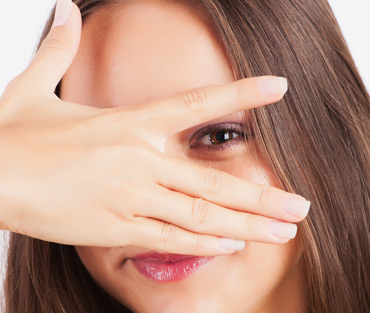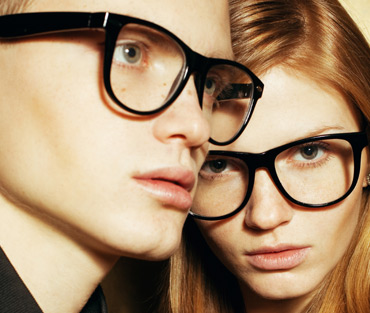EYE Care EYE Health EYE Wear
Vision info

Common vision problems

Useful links
- • Canadian Association of Optometrists
- • Canadian Examiners in Optometry
- • Canadian National Institute for the Blind
- • Canadian Ophthalmological Society
- • College of Optometrists of Ontario
- • Doctors of Optometry Canada
- • Ontario Association of Optometrists
- • Optometry Giving Sight
- • School of Optometry - University of Waterloo
- • Vision Institute of Canada

Common vision problems

Useful links
- • Canadian Association of Optometrists
- • Canadian Examiners in Optometry
- • Canadian National Institute for the Blind
- • Canadian Ophthalmological Society
- • College of Optometrists of Ontario
- • Doctors of Optometry Canada
- • Ontario Association of Optometrists
- • Optometry Giving Sight
- • School of Optometry - University of Waterloo
- • Vision Institute of Canada
Interesting info
How often should I have an eye exam?
• OHIP covered exams, 12-18 months
• Ontario Disability and Ontario Works covered exams, every two years
• 20 years to 64 years, at least every two years
Who is eligible for an OHIP covered eye exam
• Patients 19 years old and under
• Patients 65 years old and over
• Patients with certain eye and/or medical conditions of any age
Vision care is vital at all ages. A person's eye care needs are very case specific and so the above recommendations may not apply in all cases.
Contact Lenses
Having a proper contact lens consultation and fitting is the key to contact lens wearing success. There are contact lenses for almost all types of vision problems but only an eye care professional with proper training and experience can provide you with the right one for you. Seeing well is important, but the lenses also have to be safe, comfortable, and not impact on the long term health of your eyes.
Our Optometrists have extensive training and expertise in all types of contact lenses and will be happy to answer any questions you might have about vision correction with contact lenses.
Glaucoma
Glaucoma is a condition in which elevated pressure in the eye damages the optic nerve, causing peripheral and total blindness. It is widely noted as the second-leading cause of blindness in the U.S.
Symptoms: There may be no early warning signs, so optometric exams are crucial. Otherwise, pain, blurred vision and the appearance of colored rings around lights are leading indicators.
Treatment: Once diagnosed, glaucoma treatments are highly effective. Prescription eye drops, oral medications, laser treatment or even surgery may be involved. If untreated, glaucoma can cause blindness, and there are no cures.
Prevention: Because there may be few symptoms, and vision lost to glaucoma cannot be restored (the condition can only be halted), frequent monitoring for glaucoma is essential. The risk for glaucoma increases dramatically after age 35 and is often hereditary.
Cataracts
Cataracts are a clouding of the eye’s crystalline lens that usually develops slowly over time. (In the case of post-traumatic cataracts, however, they can also occur very quickly.) It is the leading cause of poor vision in adults.
Symptoms: Dimmed or blurred vision, double vision, halos or glare around lights, dull colors, sensation of a film over the eyes, frequent cleaning of the eyes, difficulty driving or reading, and frequent changing or cleaning of glasses.
Treatment: If a cataract grows larger or denser, it can be surgically removed. It is a safe procedure with a near 100 per cent success rate. Following surgery, it is normal to require a change in spectacle correction.
Prevention: Wearing UV protection when outdoors is very helpful. There is also some evidence to suggest that a diet high in selenium and vitamins C and E have preventative benefits. Avoiding cigarette smoke, air pollution and alcohol consumption may also help.
Macular Degeneration
Macular degeneration is a condition in which the macula (the part of the retina responsible for sharp reading vision) fails to function efficiently. It is a common cause of impaired reading or detailed vision—the leading cause of blindness worldwide, in fact. Macular degeneration is generally age-related.
Symptoms: Initial signs include blurred reading vision, a weakening of color vision, distortion or loss of central vision (e.g., a dark spot in the middle of your field of vision), and distortion in vertical lines.
Treatment: Although there is no cure, laser treatment or ocular injections can be effective in slowing the disease’s progression. As usual, early detection is key.
Prevention: Lifelong UV protection is very important. General nutrition is also believed to play a significant preventative role. Zinc may be especially helpful in this regard, particularly for zinc-deficient people like seniors. There is also some evidence to suggest that a diet high in vitamins C and E can protect the macula. However, an over-abundance of any vitamin may affect your body’s ability to absorb important nutrients. This is a matter of some debate among health care professionals.
Dry eyes
Dry eyes are a problem that arises from inadequate or poor lubrication and moisture in one or both eyes. Unable to produce enough tears, afflicted eyes suffer irritation, burning and general discomfort.
Dry eyes may be caused by a number of factors: the natural effects of aging, side effects from medication, or significant time spent in a dry climate. Although there is no cure as such, your Optometrist is able to offer effective treatment to manage dry eyes. Artificial lubricating eye drops enhance tear production, and moist compresses as well as lid massages can help treat dry eyes.
Diabetic retinopathy
Diabetic retinopathy, as the name suggests, is associated with diabetes . It is best described as damage to the retina that occurs because of defects in or leakage from the fine blood vessels. The vast majority of those with early diabetic retinopathy are unaware of it. In advanced cases, it can result in vision blurriness and distortion.
Diabetics should ensure they see their Optometrist regularly, scheduling annual eye exams. Since it is a progressive disease, with no treatment, it can cause blindness over time. Your Optometrist can provide the invaluable advice and treatment diabetics require.
Styes
A stye is a visible infection that appears at the edges of an eyelid. Its appearance can vary somewhat, but it is harmless to your vision. Symptoms include a noticeable swelling, some discomfort and tenderness in the affected area.
Most styes heal without treatment, although the application of a hot compress can help. Unlike a pimple, however, styes cannot be manually ruptured and drained. Antibiotic ointments are available for recurring cases.
Spots & Floaters
Spots and floaters are tiny flecks or threads, which seem to float in front of your eyes. They are experienced by most people. They are often caused by particles of protein trapped in the fluid inside the eye, or by the deterioration of the fluid due to advancing age.
Occasionally they are the result of certain eye diseases or injuries, or they may signal the development of more serious conditions such as retinal detachment. They are usually harmless, but those experiencing a sudden change or increase in “spots and floaters” or flashes of light should consult their eye doctor.
Retinal detachment
Retinal detachment is the separation of the retina from the pigment epithelium. It is often caused by holes or tears in the retina, by a tumor, or by fluid pressure in the area.
Retinal detachment occurs among the elderly or, sometimes, following head or eye injuries. There is also a higher rate of incidence among the extremely myopic.
In some cases it can be surgically treated. Apart from a sudden loss of vision, other (early) symptoms may include light flashes or an unusual number of “spots and floaters.”
Eyeglasses
Eyeglasses have come a long way over the years. As the general population continues to age, more and more people are wearing glasses. Eyeglasses themselves have become fashion accessories. The variety of lenses on the market, meanwhile, has made consumer awareness more important.
Materials:
- • Unifocal
- • Bifocal
- • Progressive lenses
- • Trifocal
- • High index (thinner lenses for strong prescriptions)
- • Photochromatic or light sensitive
- • Safety lenses
- • Tinted lenses can be functional, fashionable, or both.
- • Sunglasses soften indoor or outdoor light. Lens tints can be uniform or gradient, lightening gradually from top to bottom.
Chemical coatings serve many purposes: anti-scratch coating minimizes lens abrasions; anti-reflective coating eliminates frustrating reflective glare; metallic or mirrored coating is popular with sunglasses; and UV coating blocks solar ultraviolet radiation.
Contact Lenses
Contact lenses have long been the corrective choice for people who prefer not to wear eyeglasses. For particularly active people, eyeglasses may not be the most appropriate solution.
These small plastic lenses require greater responsibility for those who wear them. Your Optometrist can specify for you the precise cleaning and care requirements of your contact lenses. They can also provide a complete fitting and consultation, allowing you to choose between a variety of contact lens styles. Your Optometrist will inform you of any charges that may apply to your contact lens-related visits.
Materials:
- • Soft contact lenses are easy to wear, particularly for the first-time wearer, coming in a range of disposable options from one day to one year—your Optometrist can recommend the best one for you.
- • Rigid gas-permeable (RGP) lenses are more durable and may provide sharper vision, but since they are not water permeable, they may be more difficult to wear.
Types:
- • Extended wear lenses can be worn overnight and continuously for up to one month (with the latest lens materials available), but require more attentive care to prevent infection and related extended wear problems.
- • Disposable lenses are the most common, and are discarded after a specified length of time—reduced cleaning time, costs and healthier eyes are among the benefits.
- • Toric lenses are specially curved lenses designed to correct astigmatism.
- • There are a variety of other types, including coloured, novelty and UV-blocking lenses, and lenses for astigmatism and multifocal needs.
